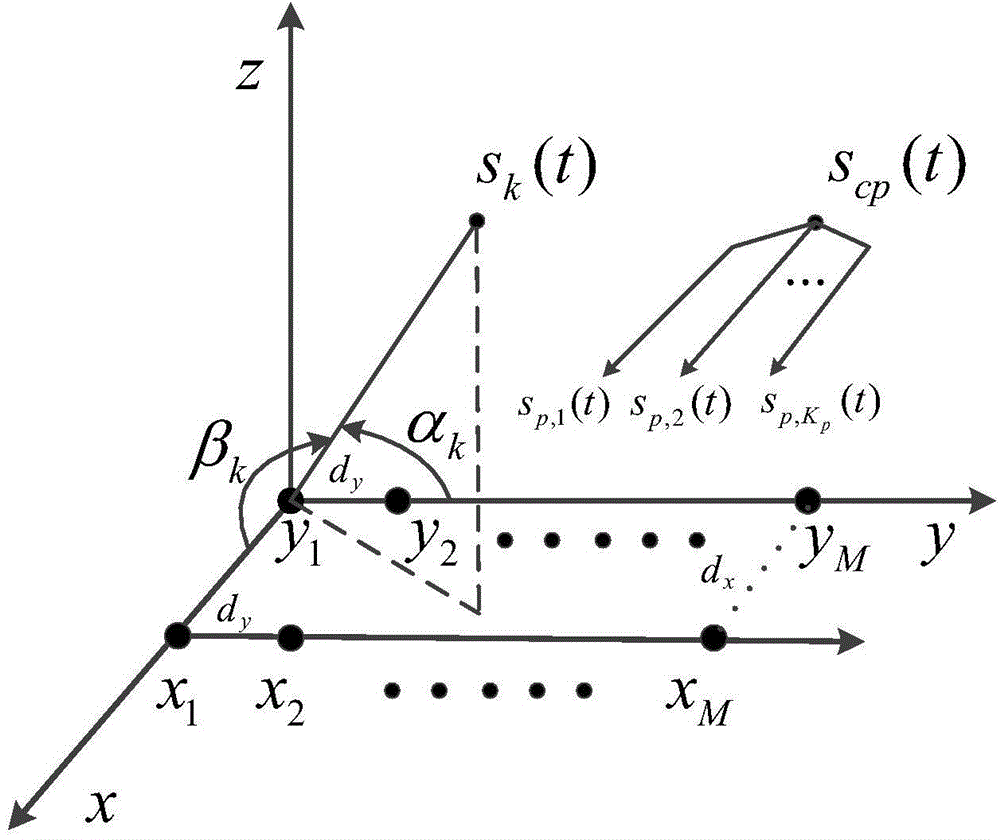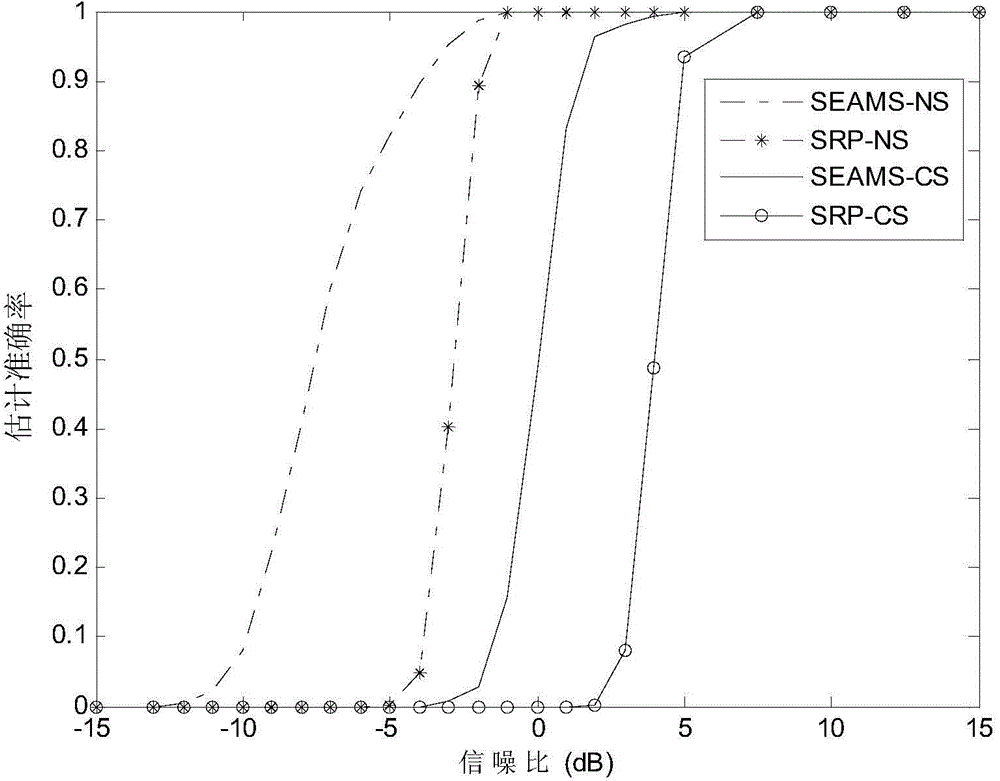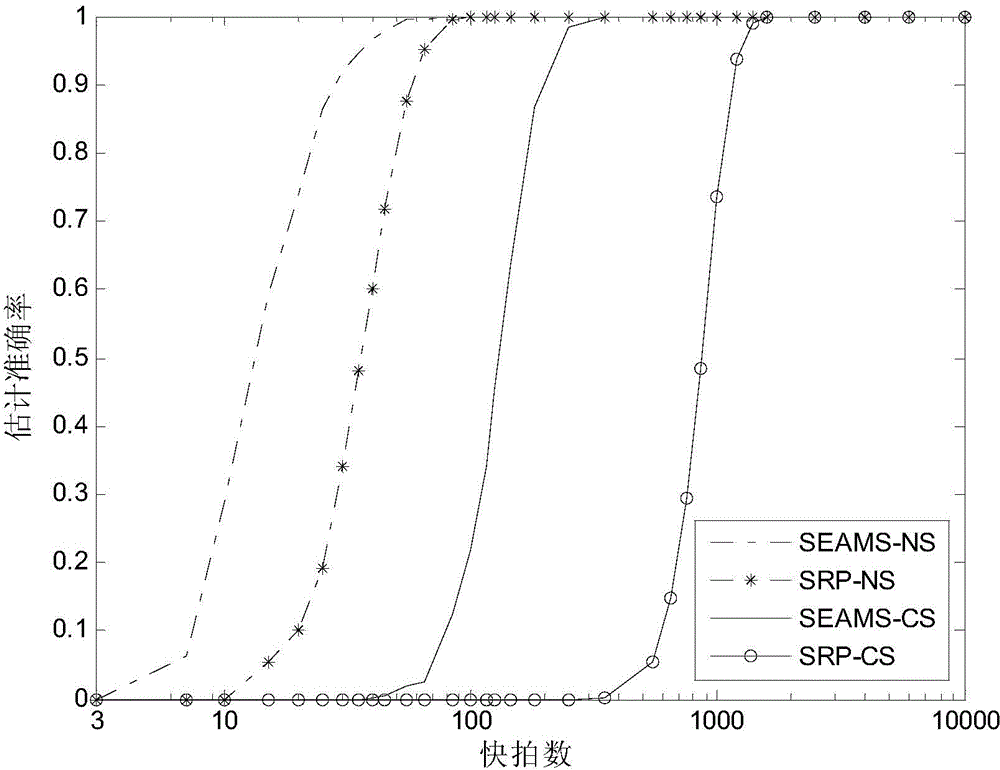Semi-parameter number estimation method for coherent and incoherent mixed signals
A coherent signal and mixed signal technology, applied in the direction of electrical digital data processing, calculation, special data processing applications, etc., can solve problems such as poor performance, reduced effective array aperture, and low computational complexity
- Summary
- Abstract
- Description
- Claims
- Application Information
AI Technical Summary
Problems solved by technology
Method used
Image
Examples
Embodiment Construction
[0046] The present invention will be described in detail below in conjunction with the accompanying drawings and embodiments.
[0047] The semi-parametric number estimation method (SEAMS) of the coherent and non-coherent mixed signal based on double-parallel equidistant uniform linear arrays of the present invention comprises the following steps:
[0048] 1) Use the QR-based ratio criterion to determine the ranks of the cross-covariance matrix and the joint matrix, and estimate the number of non-coherent signals and the number of coherent signal groups
[0049] 2) Then use the linear operator and the cross-covariance matrix of two uniform linear arrays to estimate the elevation angle of the incoherent signal { α k } k = 1 K ^ n . ...
PUM
 Login to View More
Login to View More Abstract
Description
Claims
Application Information
 Login to View More
Login to View More - R&D
- Intellectual Property
- Life Sciences
- Materials
- Tech Scout
- Unparalleled Data Quality
- Higher Quality Content
- 60% Fewer Hallucinations
Browse by: Latest US Patents, China's latest patents, Technical Efficacy Thesaurus, Application Domain, Technology Topic, Popular Technical Reports.
© 2025 PatSnap. All rights reserved.Legal|Privacy policy|Modern Slavery Act Transparency Statement|Sitemap|About US| Contact US: help@patsnap.com



